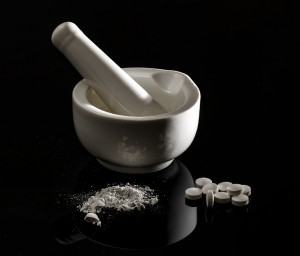
According to an interview with the Huffington Post, Jon Zibbel, lead author of the study was asked how they concluded their findings. Jon Zibbel, didn’t have a concrete answer as to why painkiller injectors were at a higher risk but she did comment about her hypothesis.
Hypothesis:
Jen Zibbel added that when a user crushes pills that sometimes they gel, therefore the user would need to add water to make the solution injectable. Therefore, the user would need to inject themselves up to three times in order to use all of the drug solution or use a bigger needle that could hold more volume.A recent study by Dr. Bill Zule showed that high dead space syringes (HDSS) retained 40 times more contaminated material after the injection, with more blood left in the syringe this increases the risk for the virus to infect someone else, if the needle is shared. Hepatitis can live for days outside of the human body, even in dried blood. Lastly, the time it takes for a painkiller injector to get high is longer time period than that of a heroin user. Greg Scott from DePaul University concluded that the longer an injection episode takes — the higher the risk for infection.
Hepatitis C and Drug Addiction
Drug addiction causes numerous detrimental effects on an individual’s health including physical, mental and emotional issues. However, it also places the individual user at a higher risk of contracting other debilitating diseases, such as Hepatitis. People who use intravenous drugs are at a much higher risk of contracting both Hepatitis B and Hepatitis C than the general population. Some studies have even shown an increase in Hepatitis A among this population of individuals.
For over 25 years, people from all over the world have chosen Waismann Method as their opioid detox provider.
We know the challenges you face and the importance of creating a unique and personal experience for you right from the start.Call for Detox Options 1-800-423-2482
Overall Infection Methods
In the drug user population, Hepatitis is transmitted primarily through the sharing of needles. Once an infected individual shares a needle with an uninfected individual, the virus is passed on. Considering that many hardened drug abusers pass needles around frequently, it’s no wonder that the incidence of Hepatitis in this population is so high. However, rates are high even among individuals who do not share needles because they do often share preparation equipment like rinsing water and burners. It is likely that many infections are occurring via these secondary methods.
Vaccination Recommendations
When individuals are addicted to hardened opiate-based drugs like heroin, their day-to-day lives revolve around purchasing and using drugs. Therefore, educating the population about the ill-effects of needle sharing is unlikely to be of any benefit. In addition, initial infection with Hepatitis is asymptomatic. Thus, infected persons don’t know they are infected until long after symptoms occur, presenting many opportunities for them to infect others. Because of these challenges, the Centers for Disease Control (CDC) recommends that drug abusers get vaccinated for the three Hepatitis strains in an effort to prevent future infection spikes.
The Link Between Hepatitis and Prescribed Opiates
A CDC report reveals that while the rate of hepatitis infections declined dramatically until 2009, they soon began to rise again in an entirely new population. In 2010, the first increase in hepatitis infection rates emerged in Massachusetts, followed soon thereafter by numerous reports from across the U.S. These infections were evenly distributed between males and females and were primarily Caucasian individuals between the ages of 15 and 24 who were not from urban areas. The primary method of infection for these individuals was self-reported intravenous drug use of heroin. Most disturbing, the vast majority of these users reported that they were introduced to the effects of opiate-based drugs by being prescribed or using painkillers like oral Oxycodone (Oxycontin). They progressed to harder drugs, like heroin, later instead of looking for the appropriate drug treatment.
A Turnaround in Drug Treatment Costs
One reason for the expanding incidence of Hepatitis in the drug population is the prohibitive cost of treating the disease once an individual has been diagnosed. Typical treatment for Hepatitis C consists of a 12-week course of oral medication that costs a total of $84,000 to $94,500, depending on the manufacturer. Obviously, this makes treatment cost prohibitive for many infected individuals, especially those in the drug culture. However, a breakthrough is beginning to occur, with the main hepatitis C drug manufacturers announcing price cuts in 2015. These cuts are both dramatic and historical. Never before have name brand drug makers cut their prices so drastically and so quickly. Even more hopeful is that drug insurers have agreed to cover the drugs for all of those diagnosed with the disease. Previously, only those with acute liver damage were covered due to the high cost of drug treatments.





